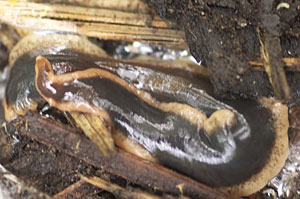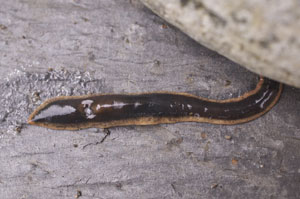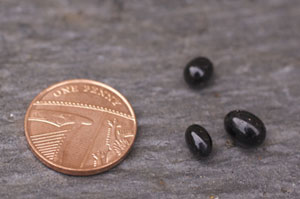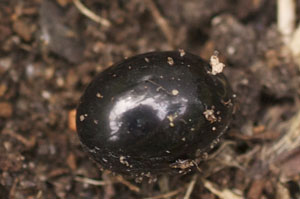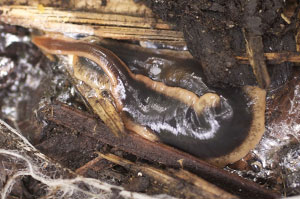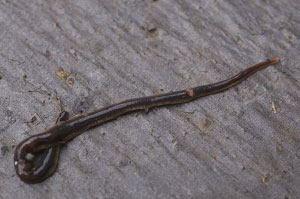Illustration © nic-nic 2016
|
July 2016 — Worms
Pest —Flatworm A very unwelcome visitor, probably brought into this country in the 1960s via plant import. There are now at least three varieties roaming various parts of the UK with one specific to Edinburgh (a creamy white version of the one below). It is a slimy little creature that enjoys sleeping in the cool, under stones and pots. It lies curled up in a spiral but when mature and fully stretched out it can reach up to 6 cm long. They are ribbon thin, pale brown with a darker surface. The single black egg 1cm long (blackcurrant size) splits to hatch out from 2 to 10 tiny worms. The flatworm dines exclusively on earthworms, dissolving them into a solution they can then suck up. They will eat all the worms within its area and when finished (getting through up to 14 per week), can lie dormant for up to a year while the earthworm population builds up again. If you do see one on your plot have no compunction but to kill it immediately. Squish it, throw it into salted water, or sprinkle salt onto it directly. There is no solution to getting rid of the flatworm apart from this action. Check that potted plants you buy from nurseries do not contain a flatworm or one of its hard-shelled black eggs. AB |
New Zealand flatworms and their shiny, hard, black eggs. These specimens were found in a local Edinburgh garden
|
|
Earthworm
|
Guest—Earthworms
Earthworms live in soil and compost bins, feeding on live and dead organic matter. They are hermaphrodite. An earthworm's digestive system runs through the length of its body. Earthworms are are both male and female and lack a skeleton. Earthworms are far less abundant in disturbed environments and are typically active only if water is present.[3] In addition to dead organic matter, the earthworm also ingests any other soil particles that are small enough which grind everything else up ready for digestion. When the worm excretes this in the form of casts, both on the surface or deeper into the soil, minerals and plant nutrients, including phosphates, potassium and nitrogen, provide growing plants with an accessible form of food The earthworm's burrows aerate and drain the soil. They are the ultimate soil improvers. They also convert organic matter into much richer humus than it would be otherwise by pulling leaves and other plant materials down into the soil. Once in its larder, the worm will shred the material, eating some and leaving the rest to rot under the surface. Recent research estimates that there can be over a million worms per acre in rich farmland. Encourage worms by keeping your compost bin healthy, regularly turning it, keeping it moist and adding fresh, healthy material regularly. AB |


